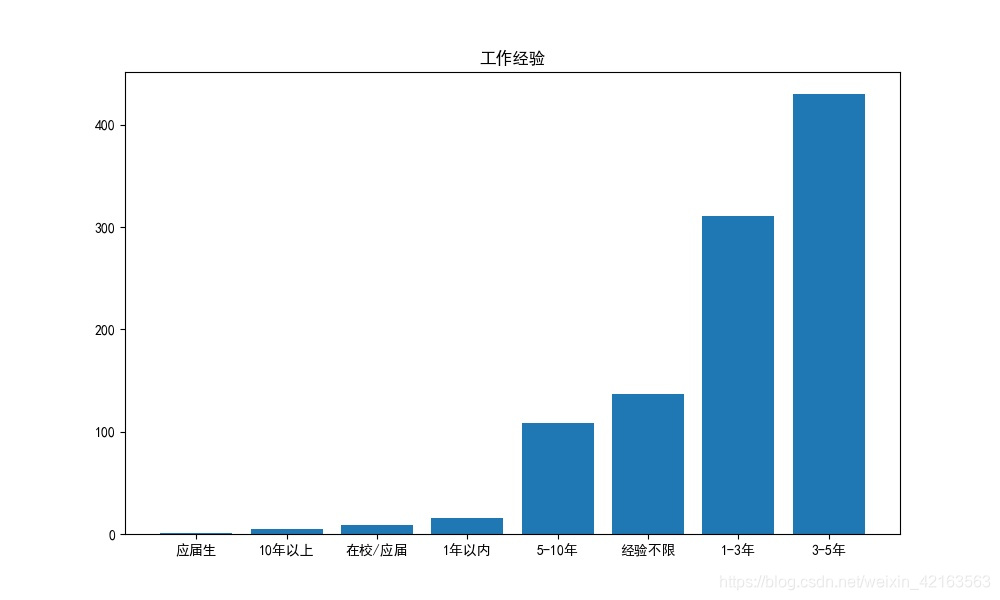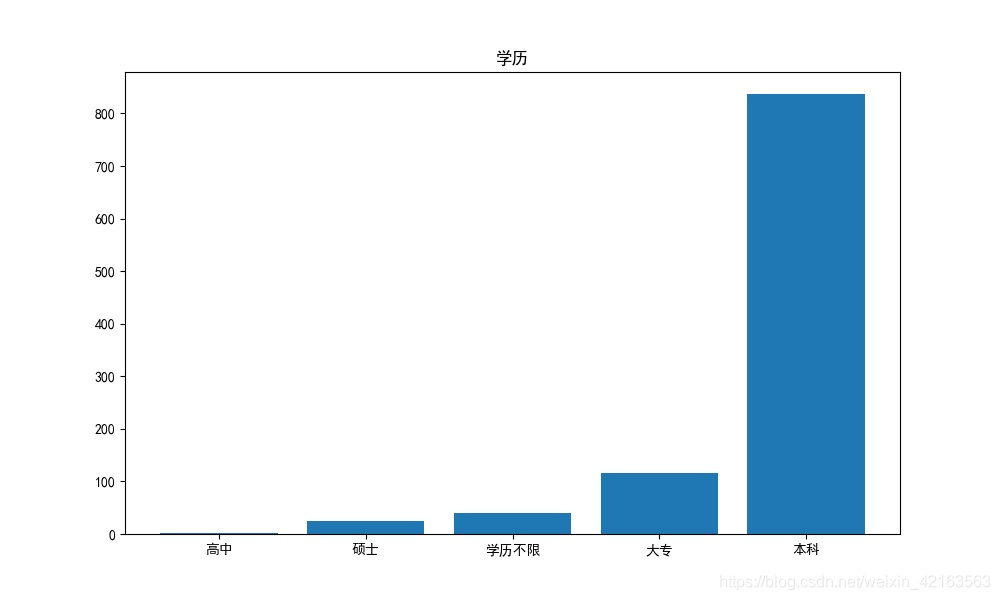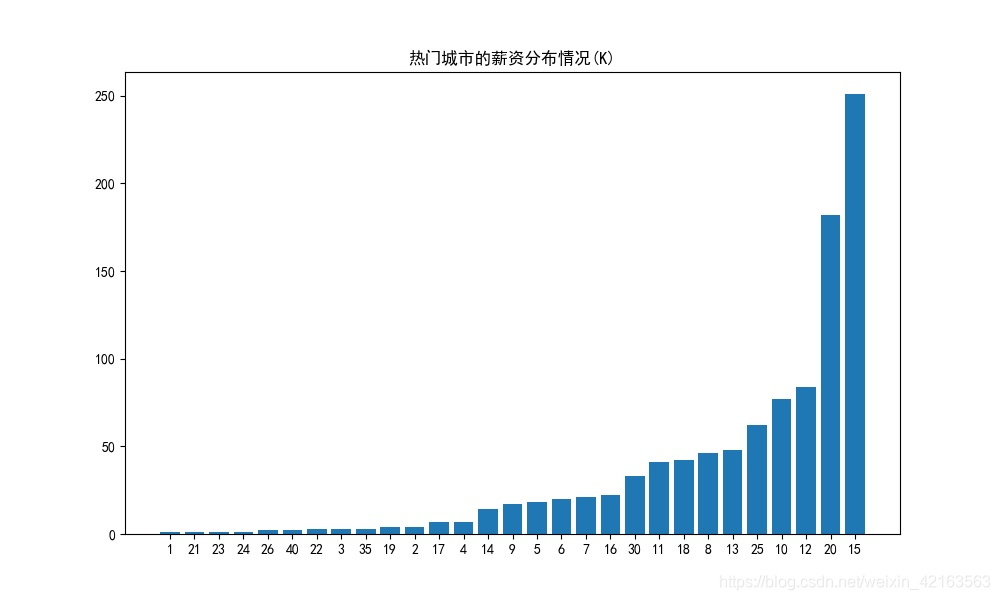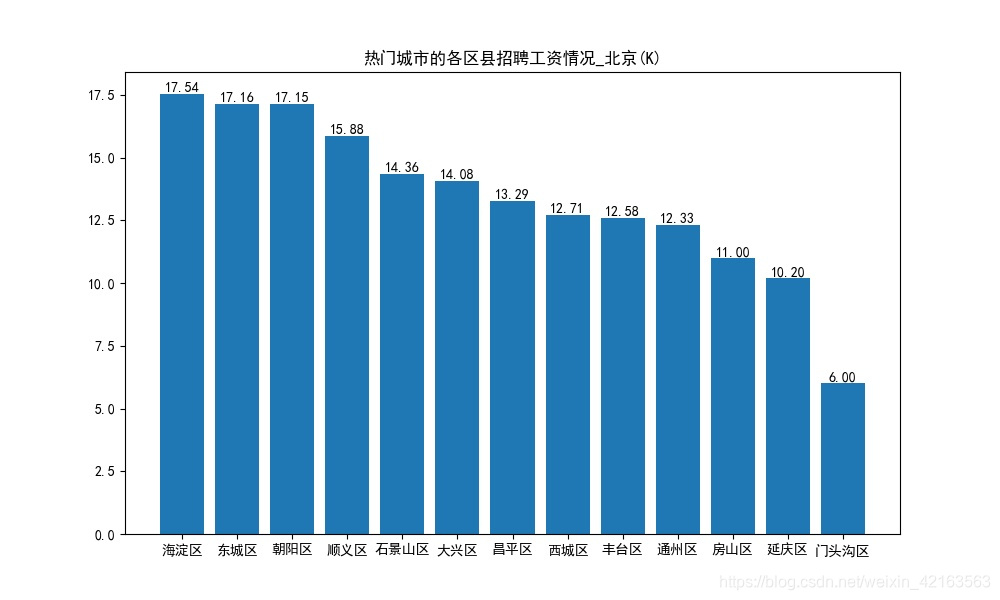说明:这是一个数据分析项目全流程(附带项目实例),本篇教程来源于网络,胖哥对此进行了完整的梳理,并把用到的数据+代码完全奉上。如需数据+完整代码可以直接到文章最后获取。
这里面的数据,我只爬取了部分,有需要的同学,可以自己重新爬取或者直接使用。
注意事项:
1)在使用Selenium进行爬取数据的时候需要提前安装好google浏览器和chromedriver.exe,同时要把chromedriver.exe放到google浏览器的安装目录,如下图:
2) chromedriver.exe的版本要和google浏览器的版本相对应
chromedriver.exe下载地址:chromedriver.storage.googleapis.com/index.html
具体对应版本,自己去找就可以了。
数据分析项目实战流程讲解:
一、数据采集
1、爬取BOSS直聘岗位数据
def close_windows(): # 如果有登录弹窗,就关闭 try: time.sleep(0.5) if dr.find_element_by_class_name("jconfirm").find_element_by_class_name("closeIcon"): dr.find_element_by_class_name("jconfirm").find_element_by_class_name("closeIcon").click() except BaseException as e: print('close_windows,没有弹窗', e) def get_current_region_job(k_index): flag = 0 # page_num_set=0#每区获取多少条数据,对30取整 df_empty = pd.DataFrame(columns=['岗位', '地点', '薪资', '工作经验', '学历', '公司', '技能']) while (flag == 0): # while (page_num_set<151)&(flag == 0):#每次只能获取150条信息 time.sleep(0.5) close_windows() job_list = dr.find_elements_by_class_name("job-primary") for job in job_list: # 获取当前页的职位30条 job_name = job.find_element_by_class_name("job-name").text # print(job_name) job_area = job.find_element_by_class_name("job-area").text salary = job.find_element_by_class_name("red").get_attribute("textContent") # 获取薪资 # salary_raw = job.find_element_by_class_name("red").get_attribute("textContent") # 获取薪资 # salary_split = salary_raw.split('·') # 根据·分割 # salary = salary_split[0] # 只取薪资,去掉多少薪 # if re.search(r'天', salary): # continue experience_education = job.find_element_by_class_name("job-limit").find_element_by_tag_name( "p").get_attribute("innerHTML") # experience_education_raw = '1-3年<em class="vline"></em>本科' experience_education_raw = experience_education split_str = re.search(r'[a-zA-Z =<>/"]{23}', experience_education_raw) # 搜索分割字符串<em class="vline"></em> # print(split_str) experience_education_replace = re.sub(r'[a-zA-Z =<>/"]{23}', ",", experience_education_raw) # 分割字符串替换为逗号 # print(experience_education_replace) experience_education_list = experience_education_replace.split(',') # 根据逗号分割 # print('experience_education_list:',experience_education_list) if len(experience_education_list) != 2: print('experience_education_list不是2个,跳过该数据', experience_education_list) break experience = experience_education_list[0] education = experience_education_list[1] # print(experience) # print(education) company = job.find_element_by_class_name("company-text").find_element_by_class_name("name").text skill_list = job.find_element_by_class_name("tags").find_elements_by_class_name("tag-item") skill = [] for skill_i in skill_list: skill_i_text = skill_i.text if len(skill_i_text) == 0: continue skill.append(skill_i_text) # print(job_name) # print(skill) df_empty.loc[k_index, :] = [job_name, job_area, salary, experience, education, company, skill] k_index = k_index + 1 # page_num_set=page_num_set+1 print("已经读取数据{}条".format(k_index)) close_windows() try: # 点击下一页 cur_page_num = dr.find_element_by_class_name("page").find_element_by_class_name("cur").text # print('cur_page_num',cur_page_num) # 点击下一页 element = dr.find_element_by_class_name("page").find_element_by_class_name("next") dr.execute_script("arguments[0].click();", element) time.sleep(1) # print('点击下一页') new_page_num = dr.find_element_by_class_name("page").find_element_by_class_name("cur").text # print('new_page_num',new_page_num) if cur_page_num == new_page_num: flag = 1 break except BaseException as e: print('点击下一页错误', e) break print(df_empty) if os.path.exists("数据.csv"): # 存在追加,不存在创建 df_empty.to_csv('数据.csv', mode='a', header=False, index=None, encoding='gb18030') else: df_empty.to_csv("数据.csv", index=False, encoding='gb18030') return k_index def main(): # 打开浏览器 # dr = webdriver.Firefox() global dr chrome_driver = 'C:\\Users\\admin\\AppData\\Local\\Google\\Chrome\\Application\\chromedriver.exe' dr = webdriver.Chrome(executable_path=chrome_driver) # dr = webdriver.Ie() # # 后台打开浏览器 # option=webdriver.ChromeOptions() # option.add_argument('headless') # dr = webdriver.Chrome(chrome_options=option) # print("打开浏览器") # 将浏览器最大化显示 dr.maximize_window() # 转到目标网址 # dr.get("https://www.zhipin.com/job_detail/?query=Python&city=100010000&industry=&position=")#全国 dr.get("https://www.zhipin.com/c101010100/?query=Python&ka=sel-city-101010100") # 北京 print("打开网址") time.sleep(5) k_index = 0 # 数据条数、DataFrame索引 flag_hot_city = 0 for i in range(3, 17, 1): # print('第',i-2,'页') # try: # 获取城市 close_windows() hot_city_list = dr.find_element_by_class_name("condition-city").find_elements_by_tag_name("a") close_windows() # hot_city_list[i].click()#防止弹窗,改为下面两句 # element_hot_city_list_first = hot_city_list[i] dr.execute_script("arguments[0].click();", hot_city_list[i]) # 输出城市名 close_windows() hot_city_list = dr.find_element_by_class_name("condition-city").find_elements_by_tag_name("a") print('城市:{}'.format(i - 2), hot_city_list[i].text) time.sleep(0.5) # 获取区县 for j in range(1, 50, 1): # print('第', j , '个区域') # try: # close_windows() # hot_city_list = dr.find_element_by_class_name("condition-city").find_elements_by_tag_name("a") # 在这个for循环点一下城市,不然识别不到当前页面已经更新了 close_windows() hot_city_list = dr.find_element_by_class_name("condition-city").find_elements_by_tag_name("a") close_windows() # hot_city_list[i].click()#防止弹窗,改为下面 dr.execute_script("arguments[0].click();", hot_city_list[i]) # 输出区县名称 close_windows() city_district = dr.find_element_by_class_name("condition-district").find_elements_by_tag_name("a") if len(city_district) == j: print('遍历完所有区县,没有不可点击的,跳转下一个城市') break print('区县:', j, city_district[j].text) # city_district_value=city_district[j].text#当前页面的区县值 # 点击区县 close_windows() city_district = dr.find_element_by_class_name("condition-district").find_elements_by_tag_name("a") close_windows() # city_district[j].click()]#防止弹窗,改为下面两句 # element_city_district = city_district[j] dr.execute_script("arguments[0].click();", city_district[j]) # 判断区县是不是点完了 close_windows() hot_city_list = dr.find_element_by_class_name("condition-city").find_elements_by_tag_name("a") print('点击后这里应该是区县', hot_city_list[1].text) # 如果是不限,说明点完了,跳出 hot_city_list = dr.find_element_by_class_name("condition-city").find_elements_by_tag_name("a") print('如果点完了,这里应该是不限:', hot_city_list[1].text) hot_city_list = dr.find_element_by_class_name("condition-city").find_elements_by_tag_name("a") if hot_city_list[1].text == '不限': print('当前区县已经点完了,点击下一个城市') flag_hot_city = 1 break close_windows() k_index = get_current_region_job(k_index) # 获取职位,爬取数据 # 重新点回城市页面,再次获取区县。但此时多了区县,所以i+1 close_windows() hot_city_list = dr.find_element_by_class_name("condition-city").find_elements_by_tag_name("a") close_windows() # hot_city_list[i+1].click()#防止弹窗,改为下面两句 # element_hot_city_list_again = hot_city_list[i+1] dr.execute_script("arguments[0].click();", hot_city_list[i + 1]) # except BaseException as e: # print('main的j循环-获取区县发生错误:', e) # close_windows() time.sleep(0.5) # except BaseException as e: # print('main的i循环发生错误:',e) # close_windows() time.sleep(0.5) # 退出浏览器 dr.quit() # p1.close()2、数据展示
学Python香吧!!!
二、数据分析
1、数据分析编码
plt.rcParams['font.sans-serif'] = ['SimHei'] # 显示中文标签 plt.rcParams['axes.unicode_minus'] = False # 设置正常显示符号 def create_dir_not_exist(path): # 判断文件夹是否存在,不存在-新建 if not os.path.exists(path): os.mkdir(path) create_dir_not_exist(r'./image') create_dir_not_exist(r'./image/city') data = pd.read_csv('数据.csv', encoding='gb18030') data_df = pd.DataFrame(data) print("\n查看是否有缺失值\n", data_df.isnull().sum()) data_df_del_empty = data_df.dropna(subset=['岗位'], axis=0) # print("\n删除缺失值‘岗位'的整行\n",data_df_del_empty) data_df_del_empty = data_df_del_empty.dropna(subset=['公司'], axis=0) # print("\n删除缺失值‘公司'的整行\n",data_df_del_empty) print("\n查看是否有缺失值\n", data_df_del_empty.isnull().sum()) print('去除缺失值后\n', data_df_del_empty) data_df_python_keyword = data_df_del_empty.loc[data_df_del_empty['岗位'].str.contains('Python|python')] # print(data_df_python_keyword)#筛选带有python的行 # 区间最小薪资 data_df_python_keyword_salary = data_df_python_keyword['薪资'].str.split('-', expand=True)[0] print(data_df_python_keyword_salary) # 区间最小薪资 # Dataframe新增一列 在第 列新增一列名为' ' 的一列 数据 data_df_python_keyword.insert(7, '区间最小薪资(K)', data_df_python_keyword_salary) print(data_df_python_keyword) # 城市地区 data_df_python_keyword_location_city = data_df_python_keyword['地点'].str.split('·', expand=True)[0] print(data_df_python_keyword_location_city) # 北京 data_df_python_keyword_location_district = data_df_python_keyword['地点'].str.split('·', expand=True)[1] print(data_df_python_keyword_location_district) # 海淀区 data_df_python_keyword_location_city_district = [] for city, district in zip(data_df_python_keyword_location_city, data_df_python_keyword_location_district): city_district = city + district data_df_python_keyword_location_city_district.append(city_district) print(data_df_python_keyword_location_city_district) # 北京海淀区 # Dataframe新增一列 在第 列新增一列名为' ' 的一列 数据 data_df_python_keyword.insert(8, '城市地区', data_df_python_keyword_location_city_district) print(data_df_python_keyword) data_df_python_keyword.insert(9, '城市', data_df_python_keyword_location_city) data_df_python_keyword.insert(10, '地区', data_df_python_keyword_location_district) data_df_python_keyword.to_csv("data_df_python_keyword.csv", index=False, encoding='gb18030') print('-------------------------------------------') def draw_bar(row_lable, title): figsize_x = 10 figsize_y = 6 global list1_education, list2_education, df1, df2 plt.figure(figsize=(figsize_x, figsize_y)) list1_education = [] list2_education = [] for df1, df2 in data_df_python_keyword.groupby(row_lable): list1_education.append(df1) list2_education.append(len(df2)) # print(list1_education) # print(list2_education) # 利用 * 解包方式 将 一个排序好的元组,通过元组生成器再转成list # print(*sorted(zip(list2_education,list1_education))) # print(sorted(zip(list2_education,list1_education))) # 排序,两个列表对应原始排序,按第几个列表排序,注意先后位置 list2_education, list1_education = (list(t) for t in zip(*sorted(zip(list2_education, list1_education)))) plt.bar(list1_education, list2_education) plt.title('{}'.format(title)) plt.savefig('./image/{}分析.jpg'.format(title)) # plt.show() plt.close() # 学历 draw_bar('学历', '学历') draw_bar('工作经验', '工作经验') draw_bar('区间最小薪资(K)', '热门城市的薪资分布情况(K)') # ----------------------------------------- # 根据城市地区求均值 list_group_city1 = [] list_group_city2 = [] for df1, df2 in data_df_python_keyword.groupby(data_df_python_keyword['城市地区']): # print(df1) # print(df2) list_group_city1.append(df1) salary_list_district = [int(i) for i in (df2['区间最小薪资(K)'].values.tolist())] district_salary_mean = round(np.mean(salary_list_district), 2) # 每个区县的平均薪资 round(a, 2)保留2位小数 list_group_city2.append(district_salary_mean) list_group_city2, list_group_city1 = (list(t) for t in zip(*sorted(zip(list_group_city2, list_group_city1), reverse=False))) # # print(list_group_city1) # print(list_group_city2) plt.figure(figsize=(10, 50)) plt.barh(list_group_city1, list_group_city2) # 坐标轴上的文字说明 for ax, ay in zip(list_group_city1, list_group_city2): # 设置文字说明 第一、二个参数:坐标轴上的值; 第三个参数:说明文字;ha:垂直对齐方式;va:水平对齐方式 plt.text(ay, ax, '%.2f' % ay, ha='center', va='bottom') plt.title('热门城市的各区县招聘工资情况(K)') plt.savefig('./image/热门城市的各区县招聘工资情况(K).jpg') # plt.show() plt.close() # ----------------------------------------- # 根据城市分组排序, list_group_city11 = [] list_group_city22 = [] list_group_city33 = [] list_group_city44 = [] for df_city1, df_city2 in data_df_python_keyword.groupby(data_df_python_keyword['城市']): # print(df_city1)#市 # print(df_city2) list_group_district2 = [] # 区县列表 district_mean_salary2 = [] # 工资均值列表 for df_district1, df_district2 in df_city2.groupby(data_df_python_keyword['地区']): # print(df_district1)#区县 # print(df_district2)#工作 list_group_district2.append(df_district1) # 记录区县 salary_list_district2 = [int(i) for i in (df_district2['区间最小薪资(K)'].values.tolist())] # 工资列表 district_salary_mean2 = round(np.mean(salary_list_district2), 2) # 每个区县的平均薪资 round(a, 2)保留2位小数 district_mean_salary2.append(district_salary_mean2) # 记录区县的平均工作的列表 district_mean_salary2, list_group_district2 = (list(tt) for tt in zip( *sorted(zip(district_mean_salary2, list_group_district2), reverse=True))) plt.figure(figsize=(10, 6)) plt.bar(list_group_district2, district_mean_salary2) # 坐标轴上的文字说明 for ax, ay in zip(list_group_district2, district_mean_salary2): # 设置文字说明 第一、二个参数:坐标轴上的值; 第三个参数:说明文字;ha:垂直对齐方式;va:水平对齐方式 plt.text(ax, ay, '%.2f' % ay, ha='center', va='bottom') plt.title('热门城市的各区县招聘工资情况_{}(K)'.format(df_city1)) plt.savefig('./image/city/热门城市的各区县招聘工资情况_{}(K).jpg'.format(df_city1)) # plt.show() plt.close() # ---------------------------------------------------- skill_all = data_df_python_keyword['技能'] print(skill_all) skill_list = [] for i in skill_all: # print(type(i)) print(i) # print(i.split(", | ' | \[ | \] | \" | ")) result = re.split(r'[,\' \[, \] ]', i) print(result) # if type(i) == list: skill_list = skill_list + result print('++++++++++++++++++++++++++++++++') # print(skill_list) list_new = skill_list # 词频统计 word_counts = collections.Counter(list_new) # 对分词做词频统计 word_counts_top10 = word_counts.most_common(30) # 获取前10最高频的词 # print (word_counts_top10) # 输出检查 # print (word_counts_top10[0][0]) # 输出检查 # 生成柱状图 list_x = [] list_y = [] for i in word_counts_top10: list_x.append(i[0]) list_y.append(i[1]) print('list_x', list_x[1:]) print('list_y', list_y[1:]) plt.figure(figsize=(30, 5)) plt.bar(list_x[1:], list_y[1:]) plt.savefig('./image/技能_词频_柱状图.png') # plt.show() plt.close() list_new = " ".join(list_new) # 列表转字符串,以空格间隔 # print(list_new) wc = wordcloud.WordCloud( width=800, height=600, background_color="#ffffff", # 设置背景颜色 max_words=50, # 词的最大数(默认为200) max_font_size=60, # 最大字体尺寸 min_font_size=10, # 最小字体尺寸(默认为4) # colormap='bone', # string or matplotlib colormap, default="viridis" colormap='hsv', # string or matplotlib colormap, default="viridis" random_state=20, # 设置有多少种随机生成状态,即有多少种配色方案 # mask=plt.imread("mask2.gif"), # 读取遮罩图片!! font_path='simhei.ttf' ) my_wordcloud = wc.generate(list_new) plt.imshow(my_wordcloud) plt.axis("off") # plt.show() wc.to_file('./image/技能_词云.png') # 保存图片文件 plt.close()2、学历分析
3、工作经验分析

4、城市招聘薪资分析
5、城市区县薪资分析
6、数据分析所需技能展示
要完整Python代码和数据集的朋友们,请关注如下微信公众号,回复"BOSS直聘数据分析实战",即可获取完整内容;
添加胖哥微信:zy10178083,胖哥拉你进去python学习交流群,胖哥会不定期分享干货!
微信公众号:胖哥真不错。






































 974
974

 被折叠的 条评论
为什么被折叠?
被折叠的 条评论
为什么被折叠?










